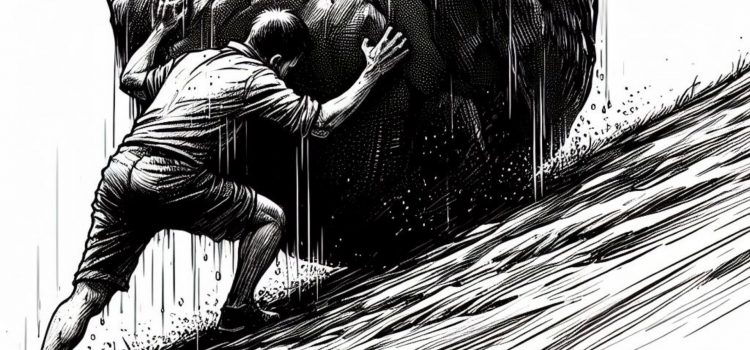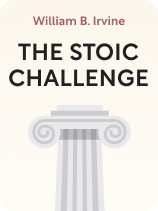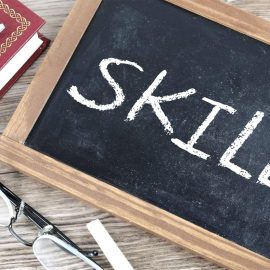

This article is an excerpt from the Shortform book guide to "The Stoic Challenge" by William B. Irvine. Shortform has the world's best summaries and analyses of books you should be reading.
Like this article? Sign up for a free trial here.
Why should you embrace adversity? How can you expose yourself to unpredictable adversities?
William B. Irvine recommends you prepare for real-world setbacks by confronting unpredictable adversities. If they come along, you have the chance to practice handling the situations as a Stoic would.
Learn how to prepare for the worst by embracing it.
Embrace Adversity Like a Stoic
The point of embracing adversity is to get used to the unpredictability of troubles and the task of remembering your strategy, since in normal life, you won’t see adversities coming.
(Shortform note: Another way to look at this is that Irvine advocates for a sort of personal antifragility. That is, his training recommendations put you through exactly the sort of productive stress tests that increase the overall toughness of a system (such as your body and mind). In Antifragile, Nassim Nicholas Taleb explains that antifragility is a natural response to the innate unpredictability of reality. Natural systems, such as forests or the human body, evolved an antifragility as an adaptation to unforeseeable hardship, and you can make use of this capacity by following Irvine’s advice to train for adversity.)
To expose yourself to unpredictable adversities, Irvine says that you should find opportunities to challenge yourself. This could be simple and mundane, like riding your bike to work instead of driving (forcing you to navigate unforeseen troubles along the way) or more ambitious, like learning a difficult new skill. Whatever you choose, it shouldn’t take you too far outside your comfort zone. So if you’re someone who, for instance, doesn’t hike, you’d start with a local forest trail rather than a days-long alpine trek.
According to Irvine, building a new skill is the best kind of challenge you can take on because to learn any skill means navigating numerous unforeseen challenges. This is especially true if you pick a skill that relies on capacities you aren’t strong in—for instance, a powerlifter would likely experience more unpredictable adversities in learning childcare skills than he would from switching to CrossFit.
(Shortform note: For an immediately actionable approach to skill building, you might look to Josh Kaufman’s The First 20 Hours, where he argues that you can pick up the basics of any skill in around 20 hours. Doing so involves five steps: choosing a skill, moving through preparatory research, breaking down the challenge into subskills, overcoming emotional barriers to learning, and practicing effectively.)
When you start to challenge yourself, Irvine says that you’ll come face to face with an internal instinct to be lazy. While this impulse exists in all of us, he recommends following the Stoic example and exerting control over it. That is, encountering your inner laziness is a signal to bolster your willpower and lean into the challenge rather than retreat from it. By persistently striving past the discomfort and the pull to take it easy, you’ll assert self-dominance and, in the process, amplify your autonomy.
Over time, opting to keep pushing when the going gets tough will develop your resolve—that is, you’ll get grittier. You’ll become more steadfast in the face of tough challenges, and you’ll get in the habit of not letting your inner laziness control your choices.
(Shortform note: Notions of laziness are historically and morally complex. Early conceptions arose amidst a European religious landscape that viewed productive, hardworking people as morally upright, and thereby favored by God—and over the centuries, this perspective became enmeshed with the fabric of American capitalist society. To call someone lazy has long connotated a sort of moral weakness, but contemporary psychologists have argued that this oversimplifies the issue. So, as an alternative to Irvine’s “just push through” approach to idleness, consider that if you experience laziness, it might have deeper roots in anxiety, depression, or a reasonable lack of motivation to do work that doesn’t feel meaningful enough.)

———End of Preview———
Like what you just read? Read the rest of the world's best book summary and analysis of William B. Irvine's "The Stoic Challenge" at Shortform.
Here's what you'll find in our full The Stoic Challenge summary:
- How you can minimize suffering by reframing it
- How you can use the Stoics’ strategy in your everyday life
- Why you should take any good fortune in stride






